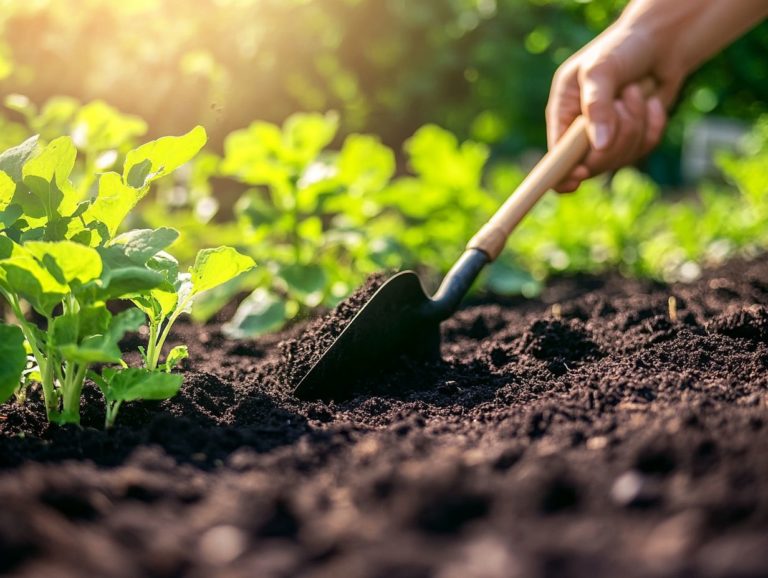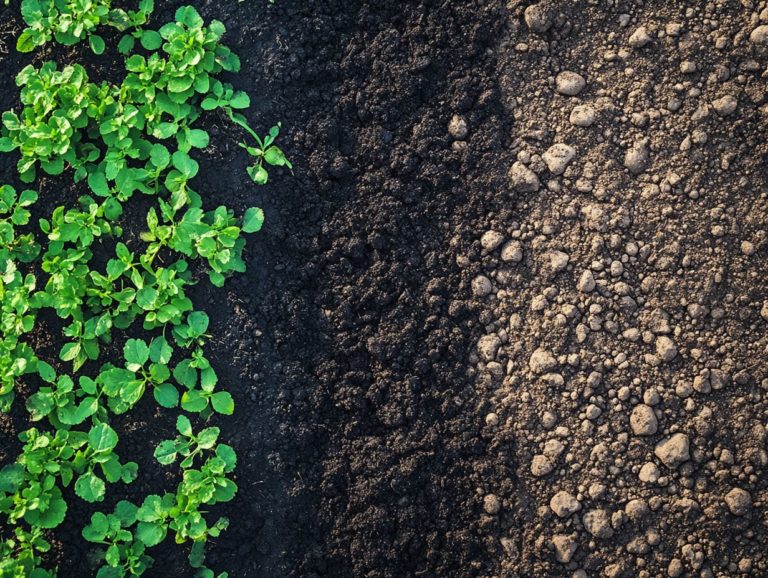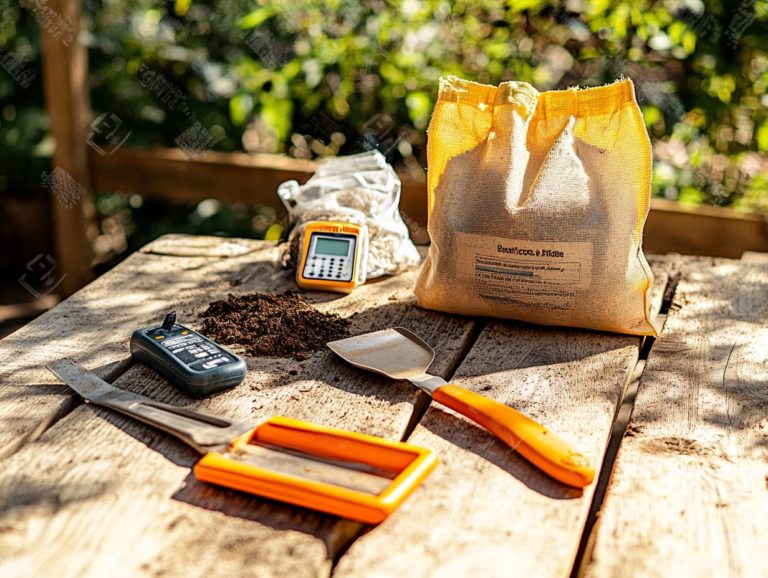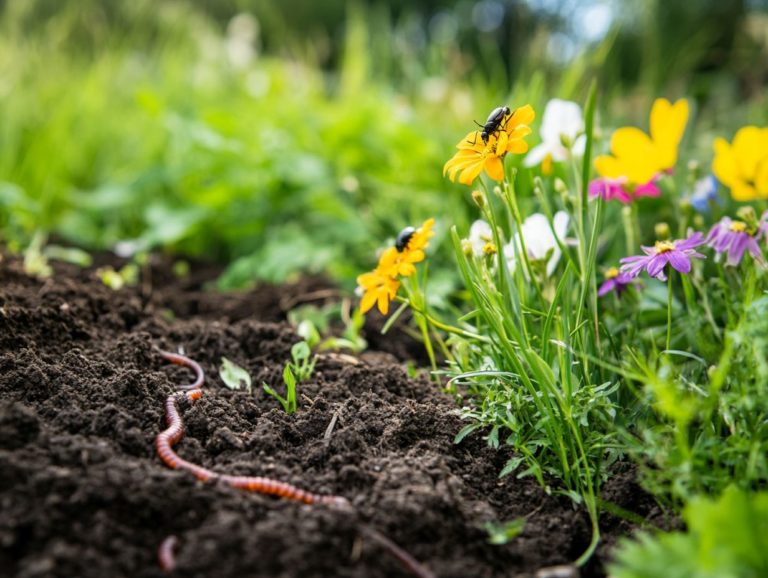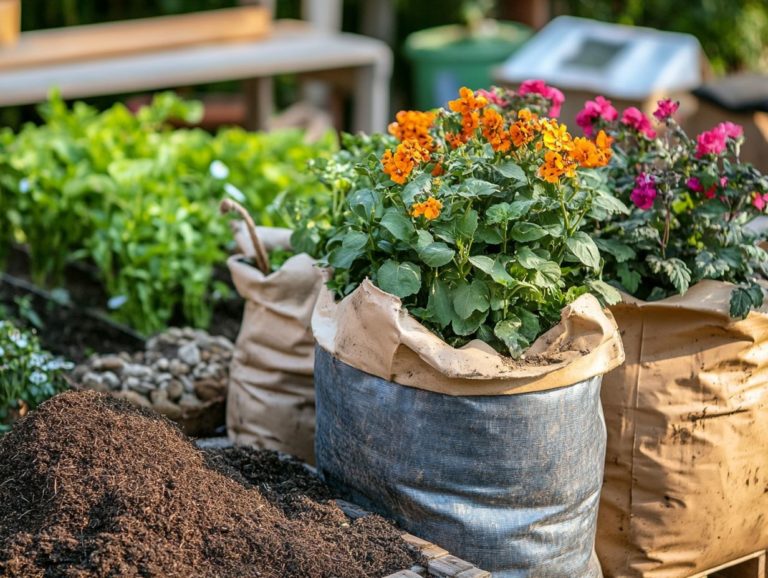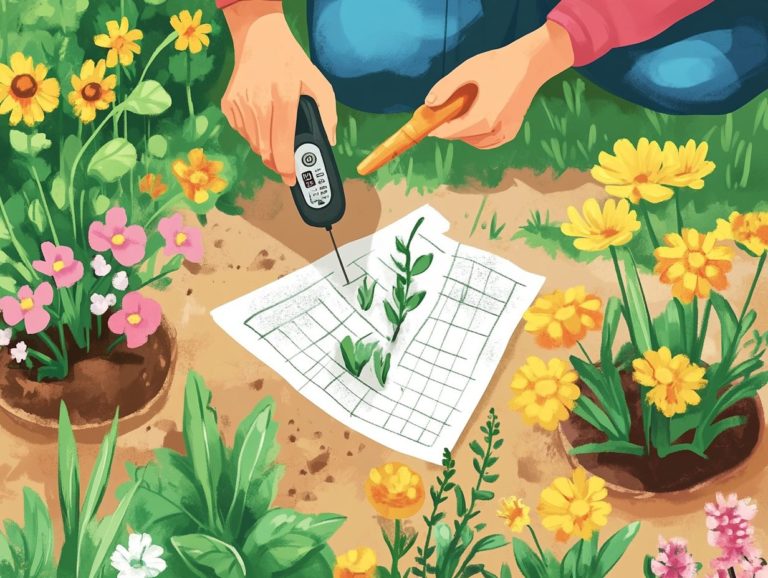Exploring the Different Soil Types
Soil transcends mere dirt; it is a vibrant ecosystem that plays a vital role in both your environment and daily life.
Understanding the different types of soil is essential for everyone whether you’re a farmer, a builder, or someone interested in environmental conservation.
Get ready to explore the fascinating world of soil types, classified by soil composition and texture, revealing their unique physical and chemical properties.
You will also discover their practical applications in agriculture, construction, and broader ecosystems, along with the factors influencing these soil types, such as climate and human activities.
Embark on this enlightening journey into the world that lies beneath your feet!
Contents
Key Takeaways:
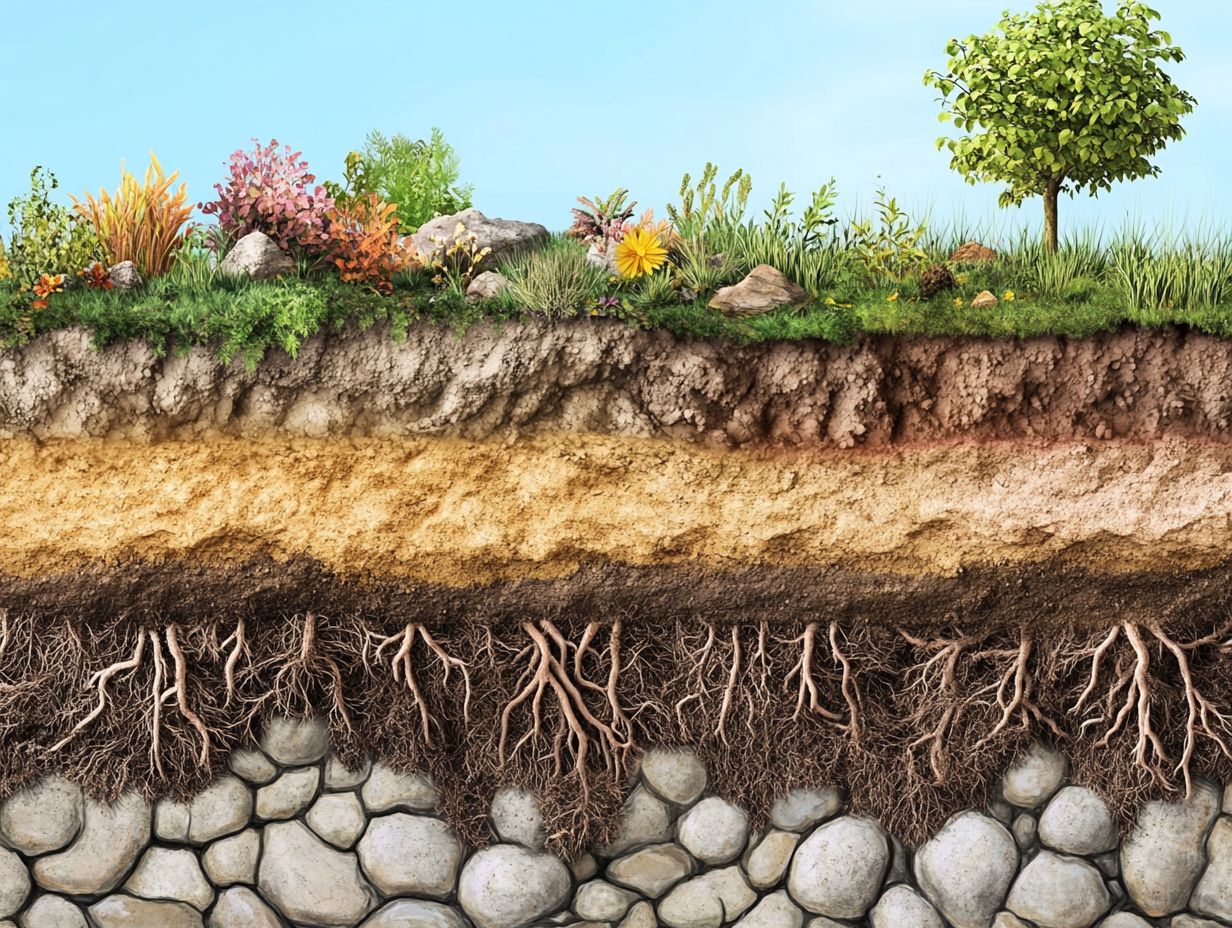
- Classify soils based on their composition and texture, with various physical and chemical properties.
- Understand soil types for their various uses in agriculture, construction, and environmental applications.
- Recognize that the type of soil in an area is affected by factors like climate, topography, and human activities.
Understanding Soil Types
Understanding soil types is essential for applications like gardening, agriculture, soil testing, and maintaining healthy ecosystems.
Soil isn t a one-size-fits-all entity; it comprises various types, each with unique characteristics and functions.
By classifying soil types such as loamy soil, sandy loam, alluvial soil, clay soil, sandy soil, silt soil, peaty soil, and chalky soil you can optimize land use and enhance soil health.
This knowledge helps you practice soil conservation and fosters sustainable agricultural development, particularly through crop rotation (changing the type of crops grown to keep soil healthy) and cover cropping (planting crops to cover the soil and protect it).
Definition and Importance
Soil is the upper layer of Earth where plant roots take root. It is composed of minerals, organic matter, and microorganisms that play a crucial role in its health and fertility.
These components influence vital properties like texture, structure, pH, and nutrient availability which are essential for sustaining plant life.
Healthy soil serves as a reservoir for essential nutrients and minerals, bolstering crop growth while maintaining balance within ecosystems.
Organic matter enriches the soil and enhances its ability to retain water, making it critical for sustainable agriculture.
By understanding and nurturing the intricate relationships among these elements, you ensure that soil remains a thriving foundation for agriculture and the surrounding environment.
Classification of Soil Types
The classification of soil types offers a systematic approach to categorizing the diverse forms of soil based on their physical and chemical properties. This is essential for grasping soil behavior and optimizing land use practices.
You can categorize soil into several types:
- Loamy
- Sandy
- Clay
- Silt
- Peaty
- Alluvial
- Chalky
Each type showcases its own unique textures and structures. By understanding these classifications, you can implement effective soil management practices that enhance soil health and boost agricultural productivity.
Start your soil journey today and make a positive impact on our environment!
Based on Composition and Texture
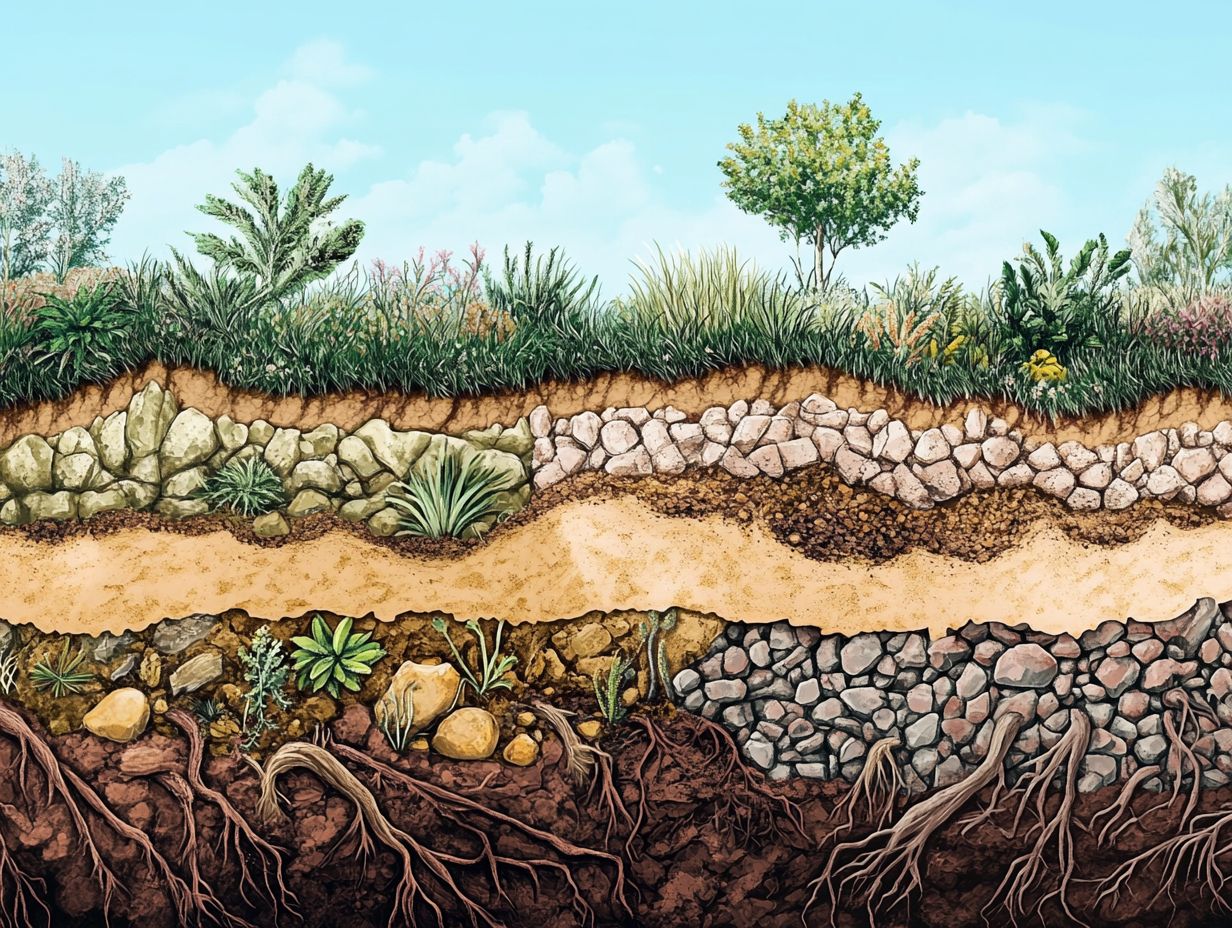
Understanding soil classification based on composition and texture is crucial. It helps us grasp how different soil types behave and support plant growth.
Take loamy soil. It blends well, providing excellent drainage while retaining moisture. This makes it perfect for many plants.
Sandy loam offers similar benefits but excels even further in drainage due to its higher sand content. In contrast, clay soil retains water effectively but can struggle with drainage and aeration.
Sandy soil drains quickly, which might lead to nutrient leaching. Meanwhile, silt soil retains moisture beautifully, enhancing nutrient availability. Peaty soil is rich in organic matter, boosting moisture retention and fertility. On the other hand, chalky soil tends to be more alkaline, affecting nutrient uptake.
By understanding these differences, you can adopt practices tailored to each soil type. This ultimately optimizes your gardening or farming efforts and improves soil moisture retention and nutrient recycling.
Characteristics of Different Soil Types
Different soil types possess unique physical and chemical properties that are essential for assessing their health and suitability for various applications, including agriculture and gardening. The texture, structure, pH levels, and nutrient composition of soils such as loamy soil, sandy loam, and clay soil play a significant role in determining their moisture retention, drainage capabilities, and nutrient availability.
By grasping these characteristics, you can make informed decisions about selecting the ideal soil type for specific crops and enhancing overall soil health.
Physical and Chemical Properties
The physical and chemical properties of soil its texture, structure, nutrient content, mineral composition, and pH are essential for understanding its critical role in agriculture and ecosystems.
These factors influence water retention, aeration, and nutrient bioavailability, which are vital for thriving crops and healthy soil. For instance, sandy soils drain quickly, often resulting in lower fertility. This makes them less suitable for certain crops unless managed carefully.
Clay soils, with their finer particles, excel at holding water but can struggle with aeration, which may impact plant root health.
Don’t overlook the role of organic matter, a key player that enhances both sandy and clay soils by improving water retention and nutrient availability. Keeping a balanced pH level is equally crucial, as it dictates nutrient solubility. When pH levels are neutral, you set the stage for optimal nutrient uptake. In contrast, acidic or alkaline conditions can restrict growth and reduce yields.
Grasping these interactions can transform your gardening game! Implementing sustainable agricultural practices enhances soil usability and ensures long-term productivity, contributing to effective soil conservation.
Uses of Different Soil Types
Different soil types hold immense significance across various sectors, including gardening, agriculture, construction, and environmental applications. Their fertility and usability directly influence outcomes in these areas.
Choosing the right soil type like opting for loamy soil in your garden or alluvial soil for agricultural endeavors can greatly affect crop yields, plant health, and sustainability efforts. By understanding the specific uses of each soil type, you empower yourself to make informed decisions that enhance land management and conservation practices.
Agricultural, Construction, and Environmental Applications
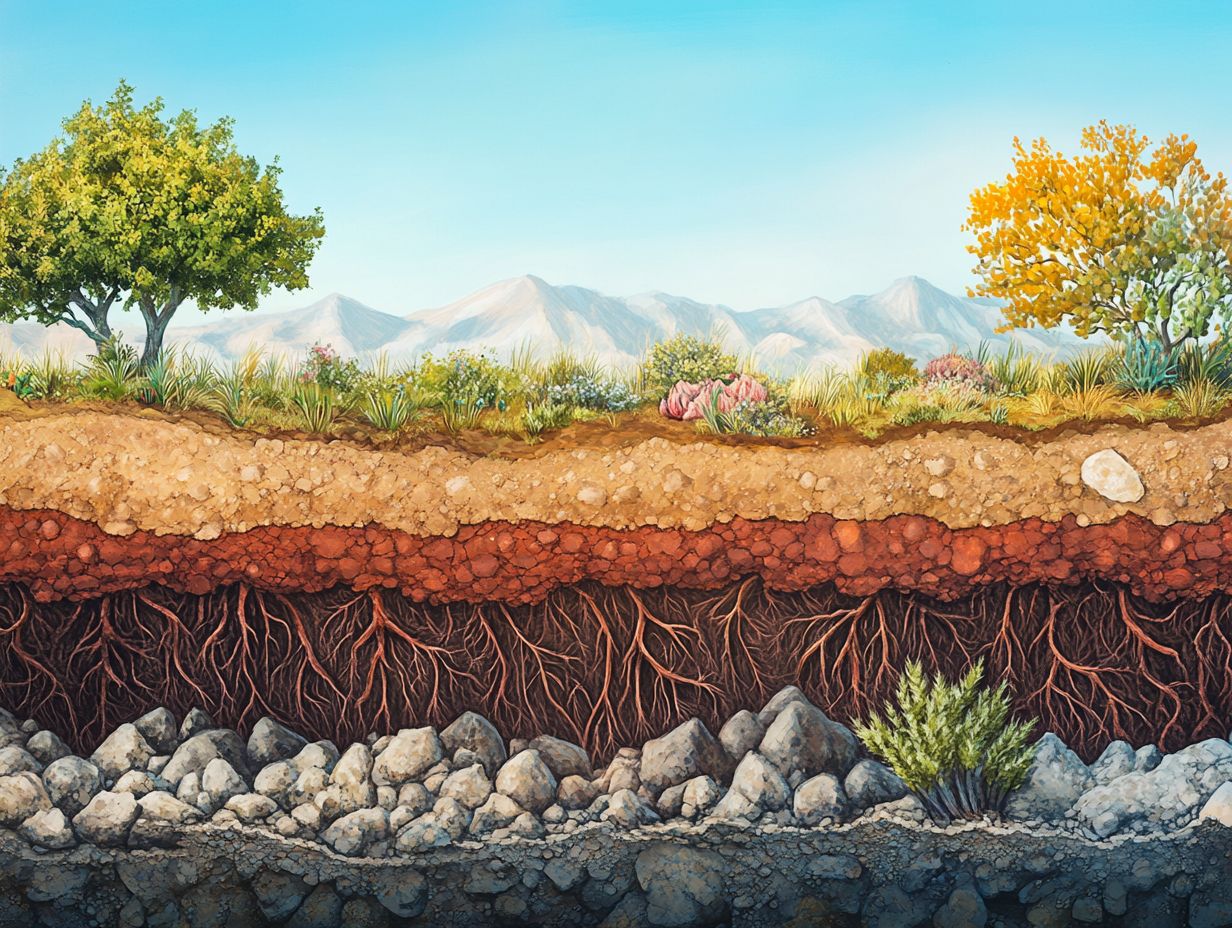
Soil types have many applications in agriculture, construction, and environmental management, selected for their distinctive characteristics and capabilities.
Take loamy soil, for instance. Its perfect blend of sand, silt, and clay offers exceptional drainage and nutrient retention, making it an excellent choice for cultivating a variety of crops.
On the other hand, alluvial soil, deposited by rivers, is brimming with minerals and fertility, ideal for supporting extensive agricultural practices in floodplain areas.
In the realm of construction, clay soil proves to be quite versatile; it can be easily molded and retains water effectively. However, it has a tendency to expand and contract, which can impact building foundations.
Sandy soil has superior drainage and is often favored for landscape construction and stormwater management.
Silt and peaty soils are noteworthy for their moisture retention capabilities, playing crucial roles that are essential for sustaining biodiversity and enhancing soil health.
Factors Affecting Soil Type
Several factors such as climate, topography, and human activities significantly influence soil type and its characteristics, ultimately affecting both the health of the soil and its usability in agriculture and gardening.
The interaction among these elements determines how different soil types, like loamy, sandy, and clay soils, are distributed and what properties they possess. Grasping these influences is essential for implementing effective soil conservation practices and ensuring sustainable agricultural methods.
Climate, Topography, and Human Activities
Climate, topography, and human activities are pivotal in determining the characteristics and types of soil in your area, affecting soil moisture and nutrient cycling.
Each of these factors interacts to create a rich tapestry of soil profiles across different regions. Variations in climate think precipitation levels and temperature shifts play a significant role in influencing the organic content and moisture levels in the soil, which directly impacts its fertility.
Topographical features, such as slope and elevation, further contribute to soil erosion and drainage patterns, either enhancing or degrading soil quality depending on the circumstances.
Human activities, especially those related to agriculture and urbanization, add another layer of complexity. Converting natural landscapes into agricultural zones can lead to soil compaction and nutrient depletion, while urban development often covers the soil with impervious surfaces, disrupting essential natural processes.
Understanding how these elements interact is essential for you to develop effective soil management and conservation strategies.
Frequently Asked Questions
What are the different types of soil?
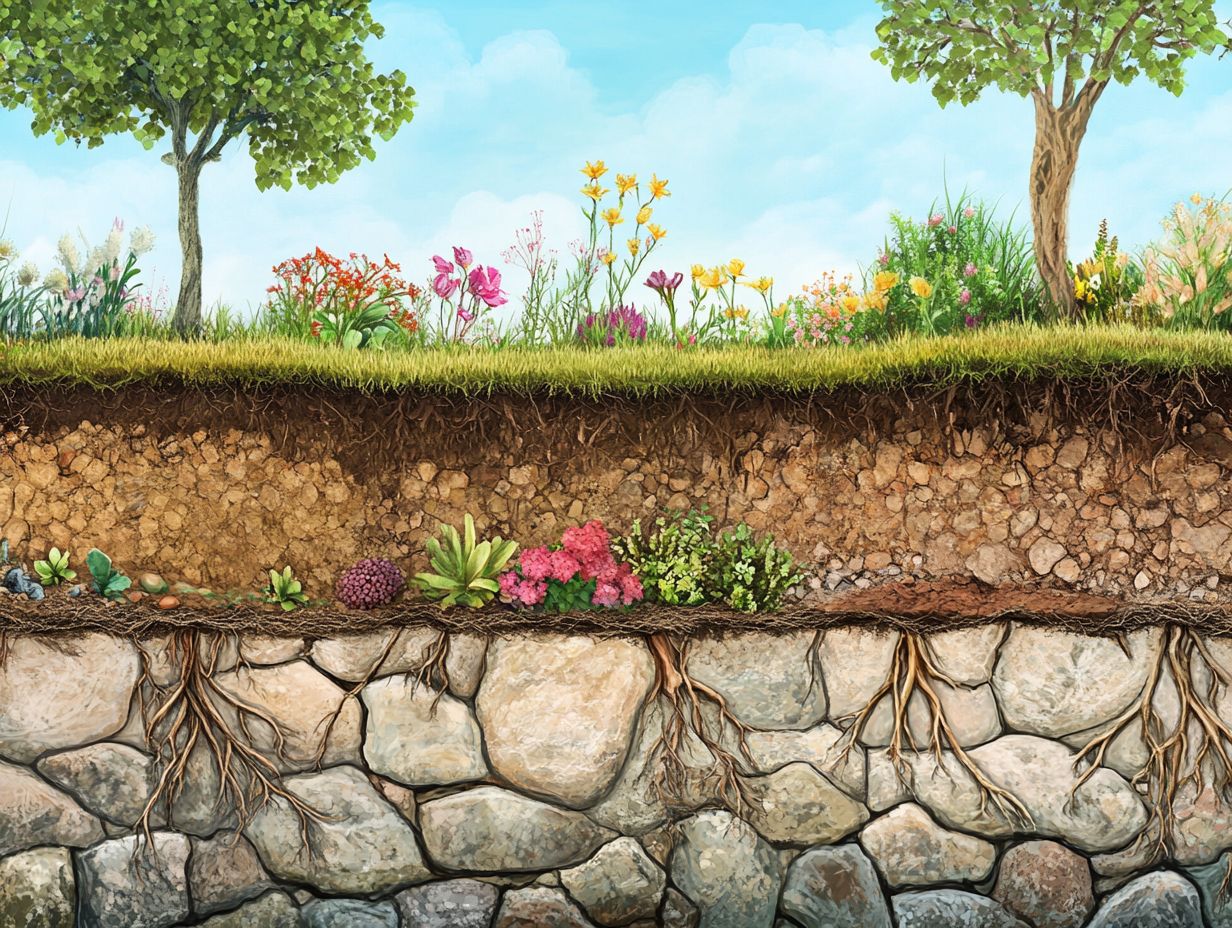
The different types of soil include:
- Sandy soil
- Clay soil
- Loamy soil
- Sandy loam
- Alluvial soil
- Peat soil
- Chalky soil
- Silty soil
Understanding soil horizons can also enhance your knowledge about these soil types.
How is sandy soil different from clay soil?
Sandy soil has larger particles and is well-draining, while clay soil has smaller particles and is more prone to water retention.
What are the characteristics of loamy soil?
Loamy soil is a mixture of sand, silt, and clay and is considered to be the ideal soil for gardening as it has good drainage and nutrient retention.
What is peat soil and where is it commonly found?
Peat soil is made up of partially decomposed organic matter and is commonly found in wet and marshy areas.
Have you ever wondered about the best soil for your garden? Explore more about soil management and conservation strategies today!
Why is it important to understand the different soil types?
Knowing your soil type is crucial for a thriving garden. It affects plant growth, how nutrients are available, and water retention.
Different plants thrive in different types of soil, so understanding these differences can enhance your gardening success.
How can I determine the type of soil in my garden?
You can find out the type of soil in your garden by conducting a simple soil test. Alternatively, look at the texture, color, and drainage to get a good idea of your soil type.

